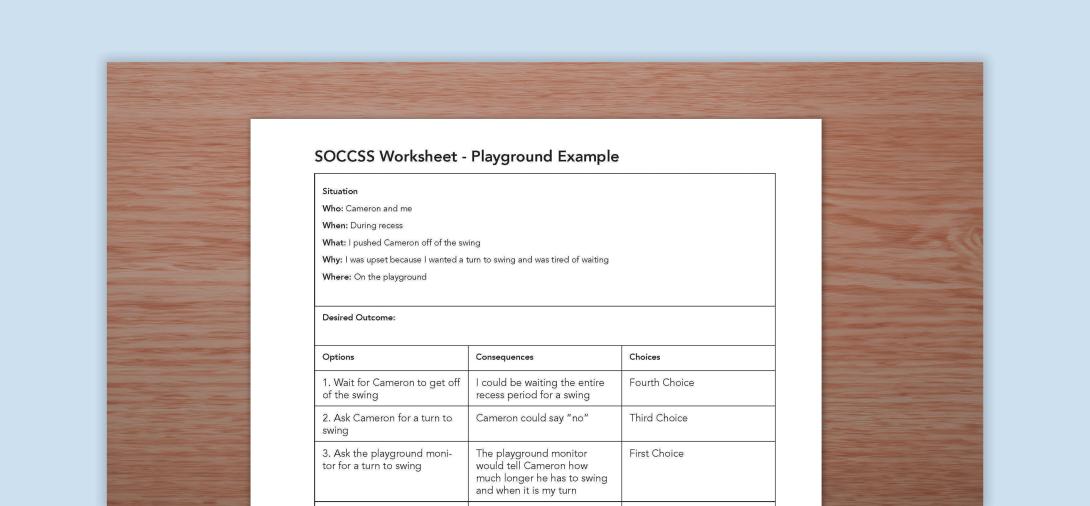SOCCSS: Situation, Options, Consequences, Choices, Strategy, Simulation

A teaching strategy to help students understand social interactions and/or social situations.
When to use:
- To plan and practice for a new social situation.
- To reflect on a social situation and practice an alternative response.
How to teach and use:
- Situation: Identify with the student the situation or incident they find difficult. It may be helpful to think about who will be, or was involved, and reasons for the situation.
- Options: Staff encourages the student to think about the options the student could use when they are in the identified situation, and narrow it down to
- Stay neutral during this brainstorming to encourage student input. If needed, with guided conversation the adult can make it so the most appropriate option is among the 3 options.
- Consequences: Discuss the consequences of each option. These may include behavioral, academic, social, and/or emotional consequences, both positive and negative.
- Choices: Facilitating the student discussion will help the student choose the most appropriate option. This should be the option that will have a desirable consequence for the student and is not too difficult for them to do.
- Strategy: This part of the discussion will focus on what the student can do when they are in the identified situation to achieve the desired consequence.
- Consider any prerequisite skills, new skills to be taught, who needs to be involved in the plan, and any other factors that will help develop the plan.
- Simulation: After the strategy plan has been created, the very important step of practicing can begin. During this step there are many options, such as, but not limited to: role play, video modeling, scripts, social narratives, etc. Practice should also take place in a variety of settings.
Tips:
- Staff completing the SOCCSS with the student should have a positive relationship.
- Staff acts as a facilitator to work collaboratively with the student and guide conversations when needed.
- Determine an appropriate time to complete a SOCCSS. Ideally this is when the student is in a calm state so they are open to discussion and/or reflection.
- It may be necessary to review the success of a strategy and make adjustments to the strategy/plan accordingly.



